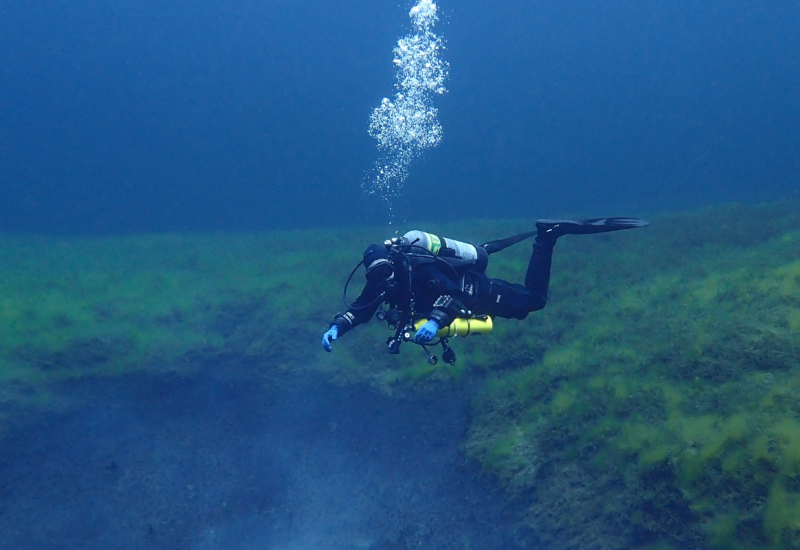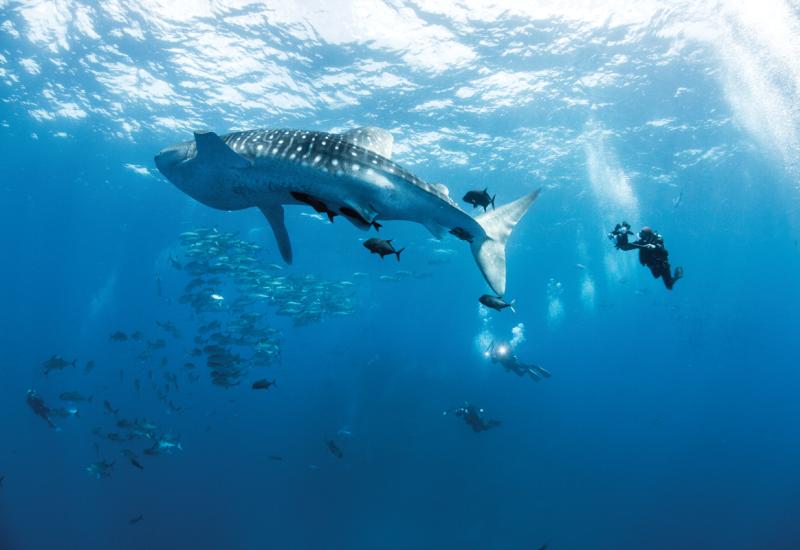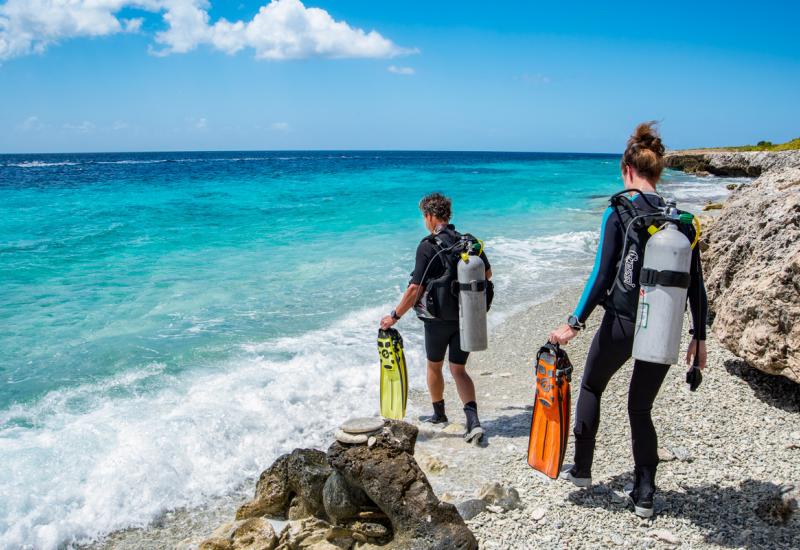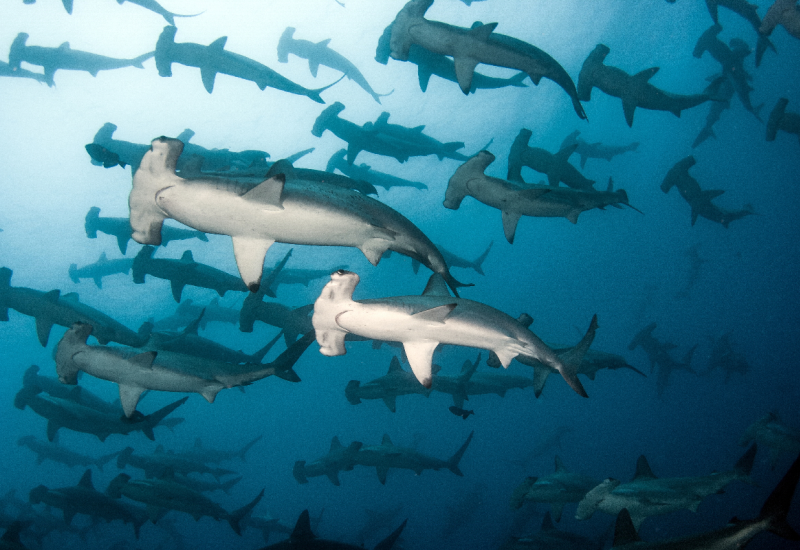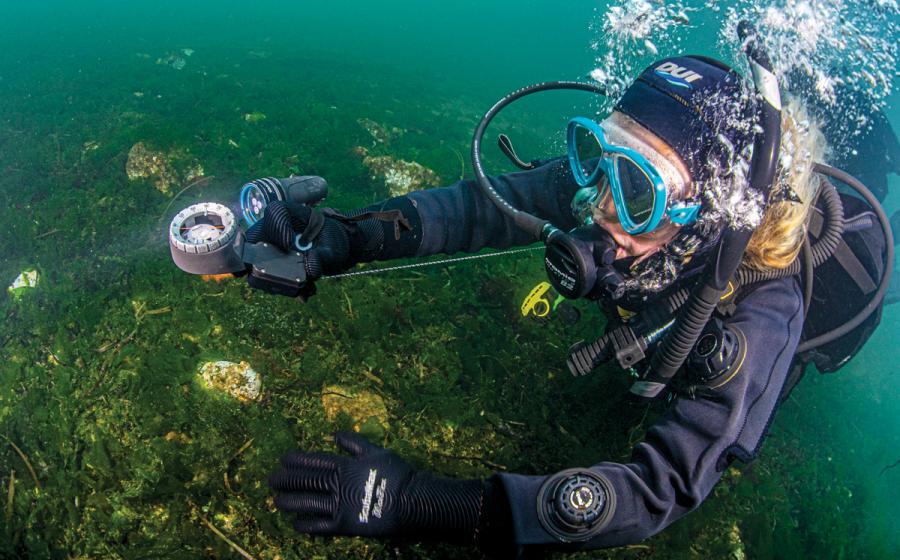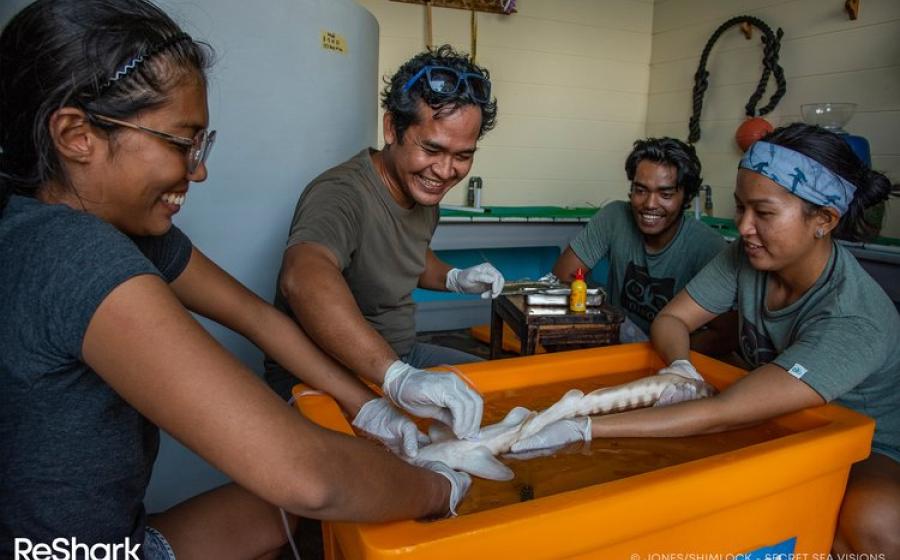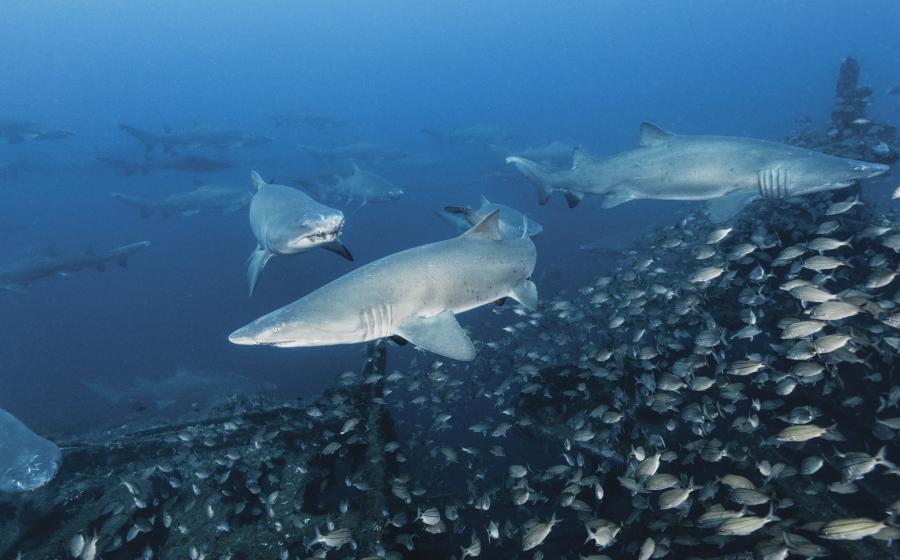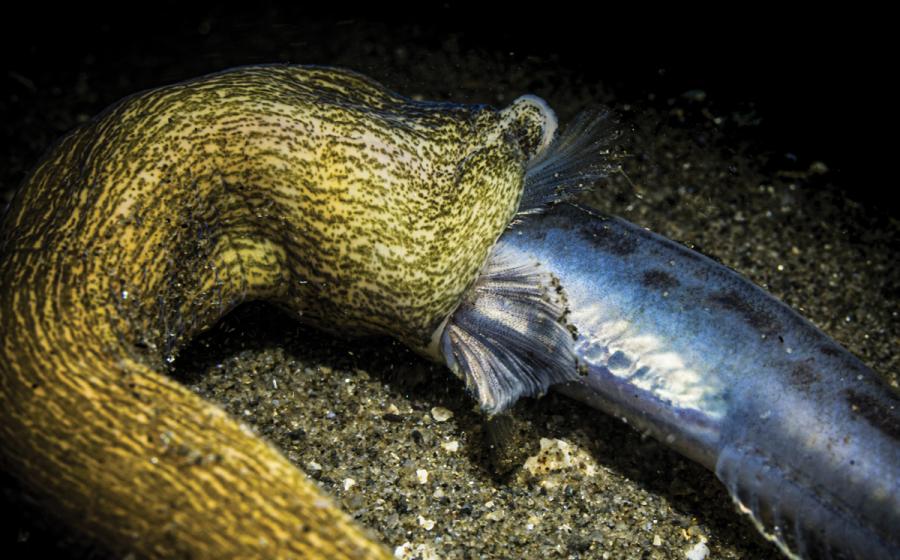Travel Guide: Name Your Adventure

Travel Guide: Name Your Adventure
Shutterstock
One of the great things about being a diver is the chance to travel. Whether it's the close-to-home reefs of the Florida Keys or the far-flung Fiji islands, there are hundreds of destinations just waiting for you to explore them. So how do you choose? A good place to start is this list of 12 can't-miss places, hand-picked by the Scuba Diving staff for their diverse diving and topside attractions. Find one with the just-right mix of the wet and dry thrills to make your first dive trip everything you dreamed it could be.
Bonaire
Visit Bonaire and you'll swear that someone designed it with divers in mind--warm, clear, calm water, gentle tradewinds, little to no rain, and more than 60 shore diving sites ringing the boomerang-shaped island. It's the self-proclaimed shore diving capital of the world ... who are we to argue?
Home to some of the Caribbean's healthiest reefs, Bonaire keeps new and experienced divers coming back for more with diverse fish life and colorful purple tube sponges. The island's leeward shore is lined with dive sites you can drive to--just gear up and walk in. The Red Slave huts, built in the 1800s to house the island's salt rakers, are a historic site and they mark a beautiful beach dive.
Beach Diving Diving here is as easy as taking a walk on the beach. The dive drill's simple--you can either walk out of your room and onto your resort's house reef, or hop in your rental truck, drive to any one of the five dozen shore markers, gear up and dive in.
Reef Diving Bonaire's marine park is one of the oldest on earth and it shows--the reef's as lush here as any you'll find in the Caribbean. In addition to the shore sites, a couple dozen more ring the small island of Klein Bonaire, a short boat ride from your resort.
Topside Adventure Divers may have put Bonaire on the map, but windsurfers have carved out a nice little niche in windy, protected Lac Bay. The island is also quite popular with mountain bikers, climbers and birders who throng to scrubby, arid Washington Slagbaai National Park, which takes up a full quarter of the island's land area.
Cozumel
It's almost a rite of passage for divers (we're shocked they don't make you do it to get certified) to dive the famed walls of Cozumel--Palancar, Columbia, Punta Sur. Great diving, reasonable prices, and exceptional food and drinks (can you say margarita?) ... what's not to like?
Cozumel is like a second home to thousands of divers who can't get enough of the world-class drift diving, deep walls and anything-goes nightlife. Underwater photographers will find no shortage of subjects among the fish, sea turtles and other diverse marine life found on a typical reef dive.
Drift Diving If the current's really kicking, you'll use your fins more for steering than for locomotion. But don't panic--go with the flow. It's a great way to see lots of reef with minimal exertion. And when you're ready to surface, your boat will come over to pick you up.
Wall Diving Cozumel's dramatic drop-offs are legendary. Hurricane Wilma, which sat on top of the island for almost three days in 2005, rearranged the sandy bottom, creating new swim-throughs to explore on the island's walls.
Reef Diving Even if deep walls aren't your thing, Cozumel's shallow reefs will keep you plenty busy. Healthy corals, sponges, schools of grunts, eagle rays and the occasional splendid toadfish (which lives only in Cozumel's waters) are sure to please.
Nightlife Carlos 'n Charlies, Señor Frog's, Fat Tuesday ... if you like drinks being poured down your throat, this is your kinda place. Just go easy on nights before diving, OK? You can also find quieter, more intimate watering holes.
Curaçao
What's not to love about a place with 40 miles of diveable shoreline? This Dutch Caribbean island's leeward coast features reefs that start just a few kicks from the water's edge, and 1,500 acres of that beautiful underwater terrain is now a protected marine park. There's also great diving at pristine Klein Curaçao, a satellite island about an hour's boat ride south. Topside, don't miss the capital city of Willemstad--with a pastel skyline and a world-class shopping district it's like a miniature Amsterdam with a Caribbean groove.
Beach Diving There's lots of do-it-yourself beach diving in Curaçao. Here's the drill: Wake up at your waterfront dive resort. Put on your gear. Walk in the water. You can also rent a vehicle and hit the road. The island's shore dive sites are marked on maps and by painted roadside stones.
Reef Diving Curaçao's reefs start in just 30 feet of water. From the shallows, these reefs slope downward at about a 45-degree angle for deeper thrills. Healthy mounds of star corals at sites like Mushroom Forest form an interesting seascape that's crowded with fish and punctuated by colorful sponges.
Wreck Diving The signature wreck of Curaçao is the Superior Producer, a 3,000-ton freighter sunk outside Willemstad's bustling harbor in 50 to 110 feet of water. The wreck sports a furry coat of orange cup corals and a variety of encrusting sponges. Look for barracuda and silversides inside the wheelhouse.
Dominica
Crowded beaches? Nonstop nightlife? High-end designer boutiques? You won't find them here. The drama on this Eastern Caribbean island is in its astonishing natural beauty. The island's green, rain-forested mountains plunge straight into the sea, and divers will find plenty to explore both under and above water.
Reef Diving Most of the diving is off the island's southwestern side, but there's also good diving along the central and northwestern coasts. Like the island itself, the underwater seascape was formed by violent volcanic forces, which created an interesting array of dive sites, from the bubbling volcanic vents at Champagne and the walls near Soufriere in the southwest to the caverns at Toucari Caves in the northwest. The central coast offers fascinating reef dives, with lots of opportunities to find small critters like batfish.
Big Animals Sperm whales are common off Dominica from October to March, and most of the island's dive operators offer fairly reliable encounters with them during these months.
Topside Adventure The island is strikingly vertical, its sharp peaks covered in lush rain forest. You can get to countless waterfalls, from the hard-to-break-a-sweat hike to Trafalgar Falls to the strenuous, six-mile trek to Boiling Lake. Families will love Wacky Rollers, an adventure park that offers a zipline canopy tour and river kayaking.
Fiji
The name of one of Fiji's most famous reef systems, Rainbow Reef, says it all--there are as many reasons to dive here as there are islands in Fiji, but the thing that sets the country's dive sites apart is the mind-boggling array of colors you'll find here. Soft corals, hard corals and fish large and small combine in infinite variety to form ever-changing Technicolor palettes. When you're not swimming along some of the world's most beautiful reefs, take time to explore Fiji's rich natural and cultural heritage by river rafting on Viti Levu, hiking to a waterfall on Taveuni or taking in a traditional kava ceremony anywhere.
Fiji is called the "soft coral capital of the world" for the vibrant display of colors found on its reefs. You'll also find dense schools of colorful reef fish known as anthias and even reef sharks prowling around in the swift currents. After all that underwater excitement, many divers relax the Fijian way by drinking kava, a bitter, mud-colored beverage that offers a mellow, relaxing buzz with no hangover. Kava ceremonies, which also involve the singing of native songs, are often used to welcome guests to the islands.
Reef Diving Dendronephthya soft corals, gorgeous little translucent trees that come in a variety of hues, brighten many of the most spectacular of Fiji's reefs. You'll find healthy soft corals on reefs like those in world-famous Somosomo Strait between the islands of Taveuni and Vanua Levu and in the Bligh Water between Viti Levu and Vanua Levu. The picture-perfect Yasawas and Mamanucas offer acres of plate and staghorn corals and excellent visibility.
Drift Diving Soft corals thrive on the nutrients delivered by moving water, so many of Fiji's most beautiful reefs are washed by currents. When the current is running, you'll float above reefs and alongside walls while your dive boat follows overhead, waiting to pick you up at the end of the dive.
Shark Diving Sharks are common sights on many Fiji reefs, but for guaranteed encounters, check out the high-octane shark dive at Pacific Harbour, Viti Levu. The dive features as many as eight different species of shark, and is one of the few places in the world where you can watch massive bull sharks being fed.
Cayman Islands
You'll be pampered in the Caymans — luxury resorts, excellent restaurants, upscale shopping and high-end topside activities have a way of making you feel that way. That same level of service extends to the diving experience offered on Grand Cayman, Little Cayman and Cayman Brac. Experienced dive operators use a fleet of modern dive boats to whisk divers to sites around the islands, and even if you're a brand-new diver, you'll make shore, reef, wreck and wall dives with ease.
Wall Diving The islands are practically synonymous with wall diving, surrounded on all sides by world-class drop-offs such as Little Cayman's Bloody Bay Wall and Grand Cayman's West Wall.
Big Animals The world's most popular stingray encounter takes place in 12 feet of bathwater-calm water off Grand Cayman's North Sound.
Wreck Diving The MV Capt. Keith Tibbetts off Little Cayman is in 50 to 80 feet of water, so divers can easily swim through the top decks and circle around the gun turrets. The scattered wreckage of the Balboa lies in the entrance of Grand Cayman's George Town Harbor. A great first-time night dive.
Nightlife Unless you consider nightlife to be diving after the sun sets, only Grand Cayman offers a variety of things to do in the evening, mostly in George Town.
Belize
Tucked under the upward swing of Mexico's Yucatan Peninsula, tiny Belize packs a continent's worth of adventures into a palm-sized package on Central America's Caribbean coast. Planeloads of divers arrive in Belize City's international airport and then fan out to world-class dive destinations up and down the coast. Here you'll find something for every diver: Gorgeous spur-and-groove reefs off popular Ambergris Caye in the north, dramatic wall dives and schooling fish off Belize's three offshore atolls, and whale shark encounters off the rarely dived southern portion of the country's long barrier reef.
Tiny Belize has an unusual wealth of attractions to keep any diver busy. You'll find spectacular diving, fish-shrouded reefs and beautiful sandy beaches all along its 180-mile-long coastline, but if you want to run with the big boys, head to Placencia Peninsula in southern Belize for whale shark encounters.
Reef Diving Belize's famed barrier reef is closest to shore at Ambergris Caye, but runs the length of the country's coastline and beyond, so dive opportunities are virtually limitless. Thirty to 60 miles off the mainland lie the country's three atolls and their three dramatic reef systems including coral walls marked by overhangs, crevices, tunnels and pinnacles.
Big Animals There are other stingray dives and shark dives in the Caribbean, but Ambergris Caye may be the only place to come face-to-face with southern stingrays and nurse sharks on a single dive, at Shark-Ray Alley. If you're looking for even bigger animals, head to Placencia Peninsula in southern Belize, where whale sharks gather at Gladden Spit between March and June each year.
Topside Adventure Looking for a little topside adventure to add to your dive itinerary? Take your pick: Explore the lush rain forest, marvel at Mayan ruins at Xunantunich, Altun Ha and Lamanai, raft down a jungle river or look for jaguars and other wildlife at the Cockscomb Basin Wildlife Sanctuary and Jaguar Preserve.
Bay Islands
Never heard of the Bay Islands? You're not alone. But what these islands may lack in name recognition, they more than make up for in big-time diving. The two best-known islands, Roatan and Utila, and the other islets and cays off Honduras's northern coast have long been revered by divers for the great variety of dive experiences they offer — reefs, animal encounters, wrecks and walls.
Reef Diving The fringing reefs off Roatan and Utila start shallow and slope off to gorgeous drop-offs. Bluebell tunicates, black coral walls, indigo hamlets, porgies, black groupers and acres of pillar coral are all hallmarks of Bay Islands diving.
Big Animals Utila is at the top of the list of Caribbean whale shark hot spots. The biggest fish in the sea congregate around the banks north of the island and may be encountered any time of the year, though the sightings occur most dependably March-May and August-October. The dolphin program run by the Roatan Institute for Marine Sciences allows you to encounter dolphins off the north and south sides of Roatan.
Topside Adventure A rainforest canopy tour is fun for the entire family, and Roatan has one that starts at the top of the mountain above West Bay and continues down to sea level. The island's French Harbour is a picturesque fishing community and a great place to have a seafood dinner. West End, a seaside village, is where tourists gather to eat, drink, shop and catch some rays. Utila Town, the only settlement on Utila, is a jumble of narrow streets, dive shops, small stores, wooden houses and bars nestled alongside East Harbour. The island is popular among budget-conscious backpackers looking for a funky vacation.
Florida Keys
The best way to enjoy the Keys? Load up your car, and drive them, east to west, diving your heart out as you go. Along the way, you'll discover why divers return to the Keys year after year — a sultry, palm-studded landscape and a warm-water seascape that is the only coral reef tract in the continental United States. Exotic, yes — but every time you pass a biker bar, kitschy tourist attraction, seafood shack or dive shop, you'll realize they're also distinctly all-American.
Reef Diving Cruise into Key Largo, pull into a parking lot marked by a dive flag, hop on a dive boat, and you'll soon be on some of the world's easiest reef diving. The shallow reefs off Marathon offer healthy stands of coral and multitudes of fish, including scores of grunts. Tavernier and the cluster of keys known as Islamorada also feature reefs known for shallow depths and dense coral cover and fish life, while Looe Key and Key West offer dramatic spur-and-groove formations that provide shelter for all manner of marine life, including lobsters and nurse sharks.
Wreck Diving The Upper Keys wreck inventory includes the mammoth, 510-foot Spiegel Grove. The top of the deck starts at a diver-friendly 50 feet and then descends vertically to 130 feet. The 327-foot-long Coast Guard cutters Bibb and Duane were sunk in 1987 a quarter-mile apart. There's plenty to see on the coral-coated exteriors of these sister ships, with lots of schooling grunts and barracuda cruising by. Another popular wreck is the Eagle, a 269-foot Dutch freighter overgrown with corals, anemones and sponges, and home to thousands of reef fish.
Nightlife Most of the nightlife in the Keys takes place in Key West, where many fun-seekers begin with the legendary sunset celebration on Mallory Square, then head for any number of spots for late-night revelry and music, including Sloppy Joe's. In Key Largo, most divers head to Sharky's at the marina. In Marathon, Hurricane Bar & Grill is noted for its tacos and music. Marker 88 in the Tavenier/Islamorada area is a relaxing place to enjoy your favorite beverage.
Palau
There's a good chance you've never heard of Palau, a tiny string of furry green islands in the remote western Pacific. Despite a brief stint in the limelight when it was the filming location of Survivor several years ago, Palau has long been, and remains today, largely the domain of divers, who hold this place in very high regard.
The islands of Palau are rimmed by a barrier reef that separates shallow reef lagoons from sheer walls and shelters one of the richest marine ecosystems on the planet. The boat rides to many of Palau's top dive sites pass through the iconic Rock Islands, a spectacular journey in itself. Tip: Bring a camera.
Wall Diving Palau boasts some of the best wall diving in the world, let alone the Pacific Basin, and sites like fish- and critter-packed Ngemelis Wall and Blue Corner allow you to soar off the shallow reeftop and out over inky depths of more than 1,000 feet.
Reef Diving In Palau, you'll be inundated with big animals, so sometimes you'll have to make an effort to turn your interest to the small stuff on the reef. You'll be rewarded by fields of hard and soft coral, crinoids, anemones, ghost pipefish and leaffish.
Drift Diving The electrifying currents here will help take your mind off kicking and focus on the more important things — like sharks, schools of fish, mantas and more — that you're likely to see.
Australia & the Great Barrier Reef
Literally one of the Wonders of the Natural World, the Great Barrier Reef lies atop the wish list of many a diver, from beginners to veterans alike. Jump on a day boat from Cairns or on a live-aboard dive vessel out of Cooktown, Cairns or Townsville to see the more than 1,500 species of fish that inhabit this 1,250-mile-long reef.
Australia's Great Barrier Reef is the world's largest "superorganism," and yes, you can see it from space, however, underwater with a mask is preferable. Day boats depart for the GBR from ports and islands up and down the coast, including the Whitsunday Islands, Townsville, Cairns, Port Douglas and Cooktown, for two-tank excursions. There are also live-aboard dive boats that will take you out for multi-day trips to search for diverse marine life, including the massive potato cod.
Big Animals Everything's bigger in Australia, from the enormous schools of pelagic fish that hang like steely curtains in the crystal clear Coral Sea, to the friendly potato cod of Ribbon Reef.
Reef Diving More than 350 species of coral make up the Great Barrier Reef superorganism that if superimposed on the United States, would stretch from Maine to Florida.
Shark Diving Australia is surrounded by sharks, from the whale sharks of Western Australia's Ningaloo Reef, to the great whites of South Australia, to the white-tips of the Coral Sea.
Topside Adventure You're not going to travel this far and just go diving, are you? Crikey! It's a continent — get out there and do something! You can embark on a rainforest adventure near Australia's main dive areas in Queensland, or venture south to Sydney to see its famed Opera House, or west to Uluru — Ayers Rock — in the Northern Territory.
Bahamas
Don't dive the Bahamas if you have a hard time making choices because no matter where you go in this island chain, you'll be faced with a long list of underwater thrills: shark feeding dives, dolphin dives, wreck dives, diving in flooded inland and ocean caverns called blue holes. And did we mention the reef? With a mix of shallow coral gardens and deep wall dives, you'll find a lifetime of diving adventure anywhere you dip below the surface. Topside, the islands range from the cater-to-your-every-whim mega-resort experience of New Providence island (Nassau and Paradise Island) and Grand Bahama (Freeport) to rustic dive lodges in the remote Out Islands to just about everything in between.
Caribbean and black-tip reef sharks are naturally abundant throughout the islands and thanks to carefully managed feeding dives, even new divers can get up-close and personal with one of the ocean's top predators. Not all Bahamas adventures come with big teeth, however. Shallow coral gardens make for great family snorkeling and long lazy dives. Between dives in the blissfully quiet Out Islands, you can chill out beneath the shade of a palm tree, secure in the knowledge that you've found your very own slice of diving paradise.
Reef Diving There are more than 700 islands in the chain and every single one of them is surrounded by vibrant coral reefs. The best part: You'll find them surrounded by white sand in as little as 20 feet of brilliantly clear water. Sunlight reflecting off the bottom brings out the colors of corals, sponges and tropical reef fish in a gorgeous display.
Wall Diving New Providence is situated on the brink of The Tongue of the Ocean, a deep ocean trench that drops to 6,000 feet. Along the top of the drop-off is a diverse coral reef structure found conveniently within safe diving depths. Nothing beats the sensation of hovering weightlessly along the sheer vertical face and watching the fish, lobsters and eels go about their daily business.
Wreck Diving Almost every island in the Bahamas has at least one signature wreck dive, but off the southwest corner of New Providence you'll find an armada of them, most sunk as movie props or diver playthings.
Shark Diving Shark feeding dives were pioneered in the Bahamas and remain one of the islands' most popular dive attractions. You'll kneel on the bottom and watch in awe as specially trained dive guides dole out fish scraps to a swirling pack of Caribbean reef sharks. It's your chance to safely observe one of nature's top predators at work — and bring back the vacation photos of a lifetime.
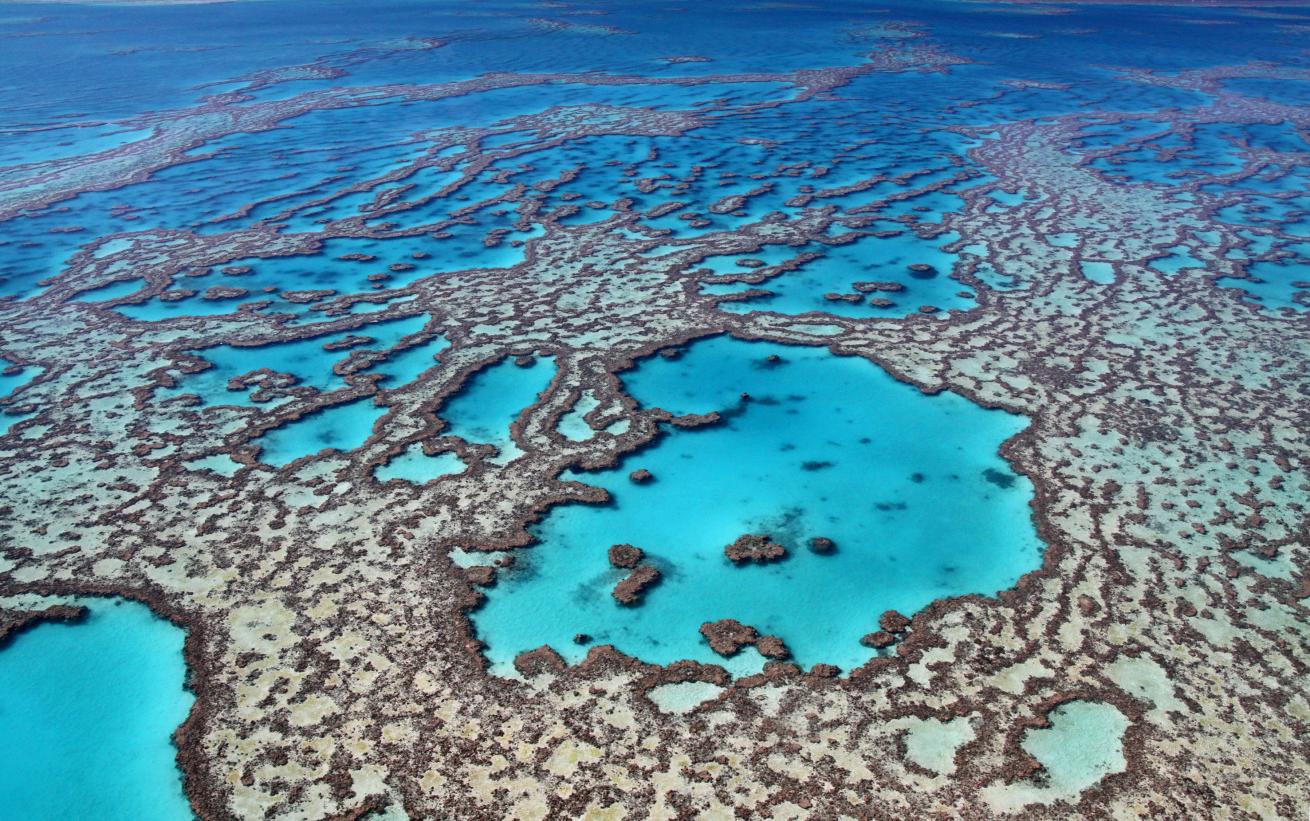
ShutterstockTravel Guide: Name Your Adventure
One of the great things about being a diver is the chance to travel. Whether it's the close-to-home reefs of the Florida Keys or the far-flung Fiji islands, there are hundreds of destinations just waiting for you to explore them. So how do you choose? A good place to start is this list of 12 can't-miss places, hand-picked by the Scuba Diving staff for their diverse diving and topside attractions. Find one with the just-right mix of the wet and dry thrills to make your first dive trip everything you dreamed it could be.
Bonaire
Visit Bonaire and you'll swear that someone designed it with divers in mind--warm, clear, calm water, gentle tradewinds, little to no rain, and more than 60 shore diving sites ringing the boomerang-shaped island. It's the self-proclaimed shore diving capital of the world ... who are we to argue?
Home to some of the Caribbean's healthiest reefs, Bonaire keeps new and experienced divers coming back for more with diverse fish life and colorful purple tube sponges. The island's leeward shore is lined with dive sites you can drive to--just gear up and walk in. The Red Slave huts, built in the 1800s to house the island's salt rakers, are a historic site and they mark a beautiful beach dive.
Beach Diving Diving here is as easy as taking a walk on the beach. The dive drill's simple--you can either walk out of your room and onto your resort's house reef, or hop in your rental truck, drive to any one of the five dozen shore markers, gear up and dive in.
Reef Diving Bonaire's marine park is one of the oldest on earth and it shows--the reef's as lush here as any you'll find in the Caribbean. In addition to the shore sites, a couple dozen more ring the small island of Klein Bonaire, a short boat ride from your resort.
Topside Adventure Divers may have put Bonaire on the map, but windsurfers have carved out a nice little niche in windy, protected Lac Bay. The island is also quite popular with mountain bikers, climbers and birders who throng to scrubby, arid Washington Slagbaai National Park, which takes up a full quarter of the island's land area.
Cozumel
It's almost a rite of passage for divers (we're shocked they don't make you do it to get certified) to dive the famed walls of Cozumel--Palancar, Columbia, Punta Sur. Great diving, reasonable prices, and exceptional food and drinks (can you say margarita?) ... what's not to like?
Cozumel is like a second home to thousands of divers who can't get enough of the world-class drift diving, deep walls and anything-goes nightlife. Underwater photographers will find no shortage of subjects among the fish, sea turtles and other diverse marine life found on a typical reef dive.
Drift Diving If the current's really kicking, you'll use your fins more for steering than for locomotion. But don't panic--go with the flow. It's a great way to see lots of reef with minimal exertion. And when you're ready to surface, your boat will come over to pick you up.
Wall Diving Cozumel's dramatic drop-offs are legendary. Hurricane Wilma, which sat on top of the island for almost three days in 2005, rearranged the sandy bottom, creating new swim-throughs to explore on the island's walls.
Reef Diving Even if deep walls aren't your thing, Cozumel's shallow reefs will keep you plenty busy. Healthy corals, sponges, schools of grunts, eagle rays and the occasional splendid toadfish (which lives only in Cozumel's waters) are sure to please.
Nightlife Carlos 'n Charlies, Señor Frog's, Fat Tuesday ... if you like drinks being poured down your throat, this is your kinda place. Just go easy on nights before diving, OK? You can also find quieter, more intimate watering holes.
Curaçao
What's not to love about a place with 40 miles of diveable shoreline? This Dutch Caribbean island's leeward coast features reefs that start just a few kicks from the water's edge, and 1,500 acres of that beautiful underwater terrain is now a protected marine park. There's also great diving at pristine Klein Curaçao, a satellite island about an hour's boat ride south. Topside, don't miss the capital city of Willemstad--with a pastel skyline and a world-class shopping district it's like a miniature Amsterdam with a Caribbean groove.
Beach Diving There's lots of do-it-yourself beach diving in Curaçao. Here's the drill: Wake up at your waterfront dive resort. Put on your gear. Walk in the water. You can also rent a vehicle and hit the road. The island's shore dive sites are marked on maps and by painted roadside stones.
Reef Diving Curaçao's reefs start in just 30 feet of water. From the shallows, these reefs slope downward at about a 45-degree angle for deeper thrills. Healthy mounds of star corals at sites like Mushroom Forest form an interesting seascape that's crowded with fish and punctuated by colorful sponges.
Wreck Diving The signature wreck of Curaçao is the Superior Producer, a 3,000-ton freighter sunk outside Willemstad's bustling harbor in 50 to 110 feet of water. The wreck sports a furry coat of orange cup corals and a variety of encrusting sponges. Look for barracuda and silversides inside the wheelhouse.
Dominica
Crowded beaches? Nonstop nightlife? High-end designer boutiques? You won't find them here. The drama on this Eastern Caribbean island is in its astonishing natural beauty. The island's green, rain-forested mountains plunge straight into the sea, and divers will find plenty to explore both under and above water.
Reef Diving Most of the diving is off the island's southwestern side, but there's also good diving along the central and northwestern coasts. Like the island itself, the underwater seascape was formed by violent volcanic forces, which created an interesting array of dive sites, from the bubbling volcanic vents at Champagne and the walls near Soufriere in the southwest to the caverns at Toucari Caves in the northwest. The central coast offers fascinating reef dives, with lots of opportunities to find small critters like batfish.
Big Animals Sperm whales are common off Dominica from October to March, and most of the island's dive operators offer fairly reliable encounters with them during these months.
Topside Adventure The island is strikingly vertical, its sharp peaks covered in lush rain forest. You can get to countless waterfalls, from the hard-to-break-a-sweat hike to Trafalgar Falls to the strenuous, six-mile trek to Boiling Lake. Families will love Wacky Rollers, an adventure park that offers a zipline canopy tour and river kayaking.
Fiji
The name of one of Fiji's most famous reef systems, Rainbow Reef, says it all--there are as many reasons to dive here as there are islands in Fiji, but the thing that sets the country's dive sites apart is the mind-boggling array of colors you'll find here. Soft corals, hard corals and fish large and small combine in infinite variety to form ever-changing Technicolor palettes. When you're not swimming along some of the world's most beautiful reefs, take time to explore Fiji's rich natural and cultural heritage by river rafting on Viti Levu, hiking to a waterfall on Taveuni or taking in a traditional kava ceremony anywhere.
Fiji is called the "soft coral capital of the world" for the vibrant display of colors found on its reefs. You'll also find dense schools of colorful reef fish known as anthias and even reef sharks prowling around in the swift currents. After all that underwater excitement, many divers relax the Fijian way by drinking kava, a bitter, mud-colored beverage that offers a mellow, relaxing buzz with no hangover. Kava ceremonies, which also involve the singing of native songs, are often used to welcome guests to the islands.
Reef Diving Dendronephthya soft corals, gorgeous little translucent trees that come in a variety of hues, brighten many of the most spectacular of Fiji's reefs. You'll find healthy soft corals on reefs like those in world-famous Somosomo Strait between the islands of Taveuni and Vanua Levu and in the Bligh Water between Viti Levu and Vanua Levu. The picture-perfect Yasawas and Mamanucas offer acres of plate and staghorn corals and excellent visibility.
Drift Diving Soft corals thrive on the nutrients delivered by moving water, so many of Fiji's most beautiful reefs are washed by currents. When the current is running, you'll float above reefs and alongside walls while your dive boat follows overhead, waiting to pick you up at the end of the dive.
Shark Diving Sharks are common sights on many Fiji reefs, but for guaranteed encounters, check out the high-octane shark dive at Pacific Harbour, Viti Levu. The dive features as many as eight different species of shark, and is one of the few places in the world where you can watch massive bull sharks being fed.
Cayman Islands
You'll be pampered in the Caymans — luxury resorts, excellent restaurants, upscale shopping and high-end topside activities have a way of making you feel that way. That same level of service extends to the diving experience offered on Grand Cayman, Little Cayman and Cayman Brac. Experienced dive operators use a fleet of modern dive boats to whisk divers to sites around the islands, and even if you're a brand-new diver, you'll make shore, reef, wreck and wall dives with ease.
Wall Diving The islands are practically synonymous with wall diving, surrounded on all sides by world-class drop-offs such as Little Cayman's Bloody Bay Wall and Grand Cayman's West Wall.
Big Animals The world's most popular stingray encounter takes place in 12 feet of bathwater-calm water off Grand Cayman's North Sound.
Wreck Diving The MV Capt. Keith Tibbetts off Little Cayman is in 50 to 80 feet of water, so divers can easily swim through the top decks and circle around the gun turrets. The scattered wreckage of the Balboa lies in the entrance of Grand Cayman's George Town Harbor. A great first-time night dive.
Nightlife Unless you consider nightlife to be diving after the sun sets, only Grand Cayman offers a variety of things to do in the evening, mostly in George Town.
Belize
Tucked under the upward swing of Mexico's Yucatan Peninsula, tiny Belize packs a continent's worth of adventures into a palm-sized package on Central America's Caribbean coast. Planeloads of divers arrive in Belize City's international airport and then fan out to world-class dive destinations up and down the coast. Here you'll find something for every diver: Gorgeous spur-and-groove reefs off popular Ambergris Caye in the north, dramatic wall dives and schooling fish off Belize's three offshore atolls, and whale shark encounters off the rarely dived southern portion of the country's long barrier reef.
Tiny Belize has an unusual wealth of attractions to keep any diver busy. You'll find spectacular diving, fish-shrouded reefs and beautiful sandy beaches all along its 180-mile-long coastline, but if you want to run with the big boys, head to Placencia Peninsula in southern Belize for whale shark encounters.
Reef Diving Belize's famed barrier reef is closest to shore at Ambergris Caye, but runs the length of the country's coastline and beyond, so dive opportunities are virtually limitless. Thirty to 60 miles off the mainland lie the country's three atolls and their three dramatic reef systems including coral walls marked by overhangs, crevices, tunnels and pinnacles.
Big Animals There are other stingray dives and shark dives in the Caribbean, but Ambergris Caye may be the only place to come face-to-face with southern stingrays and nurse sharks on a single dive, at Shark-Ray Alley. If you're looking for even bigger animals, head to Placencia Peninsula in southern Belize, where whale sharks gather at Gladden Spit between March and June each year.
Topside Adventure Looking for a little topside adventure to add to your dive itinerary? Take your pick: Explore the lush rain forest, marvel at Mayan ruins at Xunantunich, Altun Ha and Lamanai, raft down a jungle river or look for jaguars and other wildlife at the Cockscomb Basin Wildlife Sanctuary and Jaguar Preserve.
Bay Islands
Never heard of the Bay Islands? You're not alone. But what these islands may lack in name recognition, they more than make up for in big-time diving. The two best-known islands, Roatan and Utila, and the other islets and cays off Honduras's northern coast have long been revered by divers for the great variety of dive experiences they offer — reefs, animal encounters, wrecks and walls.
Reef Diving The fringing reefs off Roatan and Utila start shallow and slope off to gorgeous drop-offs. Bluebell tunicates, black coral walls, indigo hamlets, porgies, black groupers and acres of pillar coral are all hallmarks of Bay Islands diving.
Big Animals Utila is at the top of the list of Caribbean whale shark hot spots. The biggest fish in the sea congregate around the banks north of the island and may be encountered any time of the year, though the sightings occur most dependably March-May and August-October. The dolphin program run by the Roatan Institute for Marine Sciences allows you to encounter dolphins off the north and south sides of Roatan.
Topside Adventure A rainforest canopy tour is fun for the entire family, and Roatan has one that starts at the top of the mountain above West Bay and continues down to sea level. The island's French Harbour is a picturesque fishing community and a great place to have a seafood dinner. West End, a seaside village, is where tourists gather to eat, drink, shop and catch some rays. Utila Town, the only settlement on Utila, is a jumble of narrow streets, dive shops, small stores, wooden houses and bars nestled alongside East Harbour. The island is popular among budget-conscious backpackers looking for a funky vacation.
Florida Keys
The best way to enjoy the Keys? Load up your car, and drive them, east to west, diving your heart out as you go. Along the way, you'll discover why divers return to the Keys year after year — a sultry, palm-studded landscape and a warm-water seascape that is the only coral reef tract in the continental United States. Exotic, yes — but every time you pass a biker bar, kitschy tourist attraction, seafood shack or dive shop, you'll realize they're also distinctly all-American.
Reef Diving Cruise into Key Largo, pull into a parking lot marked by a dive flag, hop on a dive boat, and you'll soon be on some of the world's easiest reef diving. The shallow reefs off Marathon offer healthy stands of coral and multitudes of fish, including scores of grunts. Tavernier and the cluster of keys known as Islamorada also feature reefs known for shallow depths and dense coral cover and fish life, while Looe Key and Key West offer dramatic spur-and-groove formations that provide shelter for all manner of marine life, including lobsters and nurse sharks.
Wreck Diving The Upper Keys wreck inventory includes the mammoth, 510-foot Spiegel Grove. The top of the deck starts at a diver-friendly 50 feet and then descends vertically to 130 feet. The 327-foot-long Coast Guard cutters Bibb and Duane were sunk in 1987 a quarter-mile apart. There's plenty to see on the coral-coated exteriors of these sister ships, with lots of schooling grunts and barracuda cruising by. Another popular wreck is the Eagle, a 269-foot Dutch freighter overgrown with corals, anemones and sponges, and home to thousands of reef fish.
Nightlife Most of the nightlife in the Keys takes place in Key West, where many fun-seekers begin with the legendary sunset celebration on Mallory Square, then head for any number of spots for late-night revelry and music, including Sloppy Joe's. In Key Largo, most divers head to Sharky's at the marina. In Marathon, Hurricane Bar & Grill is noted for its tacos and music. Marker 88 in the Tavenier/Islamorada area is a relaxing place to enjoy your favorite beverage.
Palau
There's a good chance you've never heard of Palau, a tiny string of furry green islands in the remote western Pacific. Despite a brief stint in the limelight when it was the filming location of Survivor several years ago, Palau has long been, and remains today, largely the domain of divers, who hold this place in very high regard.
The islands of Palau are rimmed by a barrier reef that separates shallow reef lagoons from sheer walls and shelters one of the richest marine ecosystems on the planet. The boat rides to many of Palau's top dive sites pass through the iconic Rock Islands, a spectacular journey in itself. Tip: Bring a camera.
Wall Diving Palau boasts some of the best wall diving in the world, let alone the Pacific Basin, and sites like fish- and critter-packed Ngemelis Wall and Blue Corner allow you to soar off the shallow reeftop and out over inky depths of more than 1,000 feet.
Reef Diving In Palau, you'll be inundated with big animals, so sometimes you'll have to make an effort to turn your interest to the small stuff on the reef. You'll be rewarded by fields of hard and soft coral, crinoids, anemones, ghost pipefish and leaffish.
Drift Diving The electrifying currents here will help take your mind off kicking and focus on the more important things — like sharks, schools of fish, mantas and more — that you're likely to see.
Australia & the Great Barrier Reef
Literally one of the Wonders of the Natural World, the Great Barrier Reef lies atop the wish list of many a diver, from beginners to veterans alike. Jump on a day boat from Cairns or on a live-aboard dive vessel out of Cooktown, Cairns or Townsville to see the more than 1,500 species of fish that inhabit this 1,250-mile-long reef.
Australia's Great Barrier Reef is the world's largest "superorganism," and yes, you can see it from space, however, underwater with a mask is preferable. Day boats depart for the GBR from ports and islands up and down the coast, including the Whitsunday Islands, Townsville, Cairns, Port Douglas and Cooktown, for two-tank excursions. There are also live-aboard dive boats that will take you out for multi-day trips to search for diverse marine life, including the massive potato cod.
Big Animals Everything's bigger in Australia, from the enormous schools of pelagic fish that hang like steely curtains in the crystal clear Coral Sea, to the friendly potato cod of Ribbon Reef.
Reef Diving More than 350 species of coral make up the Great Barrier Reef superorganism that if superimposed on the United States, would stretch from Maine to Florida.
Shark Diving Australia is surrounded by sharks, from the whale sharks of Western Australia's Ningaloo Reef, to the great whites of South Australia, to the white-tips of the Coral Sea.
Topside Adventure You're not going to travel this far and just go diving, are you? Crikey! It's a continent — get out there and do something! You can embark on a rainforest adventure near Australia's main dive areas in Queensland, or venture south to Sydney to see its famed Opera House, or west to Uluru — Ayers Rock — in the Northern Territory.
Bahamas
Don't dive the Bahamas if you have a hard time making choices because no matter where you go in this island chain, you'll be faced with a long list of underwater thrills: shark feeding dives, dolphin dives, wreck dives, diving in flooded inland and ocean caverns called blue holes. And did we mention the reef? With a mix of shallow coral gardens and deep wall dives, you'll find a lifetime of diving adventure anywhere you dip below the surface. Topside, the islands range from the cater-to-your-every-whim mega-resort experience of New Providence island (Nassau and Paradise Island) and Grand Bahama (Freeport) to rustic dive lodges in the remote Out Islands to just about everything in between.
Caribbean and black-tip reef sharks are naturally abundant throughout the islands and thanks to carefully managed feeding dives, even new divers can get up-close and personal with one of the ocean's top predators. Not all Bahamas adventures come with big teeth, however. Shallow coral gardens make for great family snorkeling and long lazy dives. Between dives in the blissfully quiet Out Islands, you can chill out beneath the shade of a palm tree, secure in the knowledge that you've found your very own slice of diving paradise.
Reef Diving There are more than 700 islands in the chain and every single one of them is surrounded by vibrant coral reefs. The best part: You'll find them surrounded by white sand in as little as 20 feet of brilliantly clear water. Sunlight reflecting off the bottom brings out the colors of corals, sponges and tropical reef fish in a gorgeous display.
Wall Diving New Providence is situated on the brink of The Tongue of the Ocean, a deep ocean trench that drops to 6,000 feet. Along the top of the drop-off is a diverse coral reef structure found conveniently within safe diving depths. Nothing beats the sensation of hovering weightlessly along the sheer vertical face and watching the fish, lobsters and eels go about their daily business.
Wreck Diving Almost every island in the Bahamas has at least one signature wreck dive, but off the southwest corner of New Providence you'll find an armada of them, most sunk as movie props or diver playthings.
Shark Diving Shark feeding dives were pioneered in the Bahamas and remain one of the islands' most popular dive attractions. You'll kneel on the bottom and watch in awe as specially trained dive guides dole out fish scraps to a swirling pack of Caribbean reef sharks. It's your chance to safely observe one of nature's top predators at work — and bring back the vacation photos of a lifetime.

